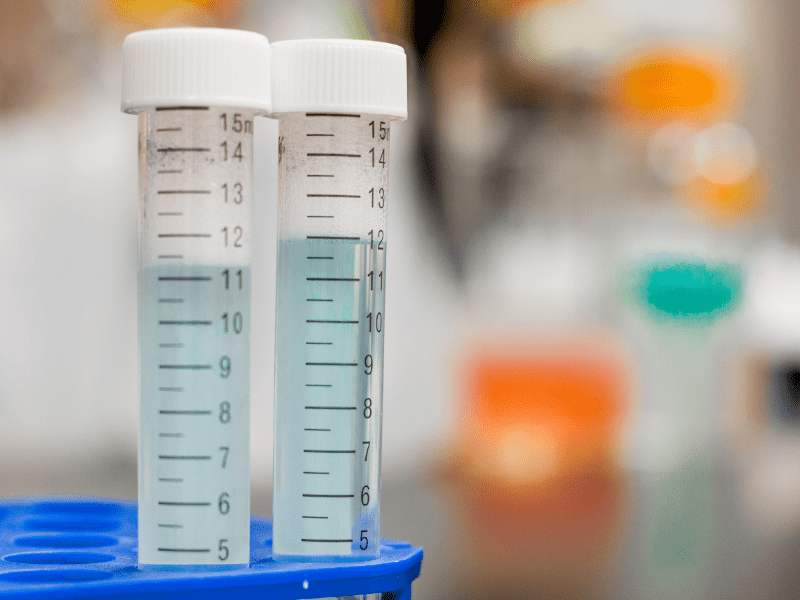Looking to expand your knowledge on Biologics? We spoke to Smithers Manager of Project Management (E&L) Michael Creese to find out more.
What special considerations are there for Extractables and Leachables when working with biologics?
Instinctively, the primary concern is for the direct toxicological impact of leachables on the patient, the same concern for any drug product type. This is why much of the focus of current industry and regulatory best practice for E&L is on patient exposure. Biologics have additional special considerations; the complex nature of biologics may mean that extractables have a negative effect on the efficacy of the API, which could also have an impact on the safety of the drug product itself, and/or affect the stability of the API.
Additionally, manufacturing processes for biologics are generally complex and increasingly use, in part or in full, disposable plastic Single Use Systems (SUS). Despite the many advantages of using SUS, the increased use of these plastics in the manufacturing process generates further risks of leachables. This risk needs to be assessed, managed and controlled.
Why are biologics more complex to study with regards to Extractables and Leachables than small molecules?
The product matrix for biologics can be complex, making leachables study design challenging. These complexities generally present different types of challenges than those encountered for smaller molecule API drug products. Many of the analytical challenges typically surround the excipient systems of biologics - not necessary the APIs themselves. The formulation of biologics can also be quite varied; as a consequence, challenges can be quite different from one biologic product to another. In many cases, the Analytical Evolution Threshold (AET) may be low, requiring further thought.
For biologics, Extractables and Leachables may additionally need to be considered much further upstream in the manufacturing process. The focus may be less on the direct toxicological concerns of leachables on the patient, and more on how in-process leachables may affect the efficiency of the manufacturing process. For example, the effect E&L can have on cell viability, cell growth, altered protein expression etc.
What would an Extractables and Leachables testing program for biologics compose of?
The design of an extractable study will reflect the purpose of the study and therefore different methods of analysis may be used. For instance, the approach taken and analytical techniques used for an extractables scouting evaluation compared to a quantitative evaluation are quite different. However, the analytical techniques typically used for Extractables and Leachables studies usually include:
- Gas Chromatography Mass Spectrometry (GC-MS)
- Liquid Chromatography Mass Spectrometry with UltraViolet detection (LC-MS/UV)
- Inductively Coupled Plasma Optical Emission Spectrometry (ICP-OES)
For a biologic, the typical core components of an E&L study are: An extractables evaluation, possibly including a simulation study, an evaluation of the extractable/simulation data and a leachable study including development and validation of target leachable methods. The final step is a toxicological/risk evaluation of the results and possible further risk mitigation activities such as routine leachables studies.
A key component for assessing E&Ls from SUS is a risk evaluation of the process components. A properly designed risk evaluation, performed prior to any E&L testing can help focus and utilise study resources efficiently.
Which E&L legislations do biological manufacturers need to adhere to?
Regardless of the drug product type, there is an underlying requirement that product contact surfaces should not leach “harmful or undesirable substances” (US FDA Guidance for Industry: Container Closure Systems for Packaging Human Drugs, Biologics, Chemistry, Manufacturing and Controls Documentation, May 1999. See also 21 CFR 600.11(b) and 600.11(h)). The requirements are essentially the same as those for small molecules. There is certainly more concern from the regulators regarding the effect leachables may have on a biologic API.
Are there any legislative changes on the horizon?
There is increased awareness of Extractables and Leachables within the industry and within regulators; much of which is driven by the raised risk of leachables arising from the increasing use of plastics in manufacturing processes and new patient delivery systems. There are also known issues that have occurred within the industry regarding leachables affecting, for example: cell viability, aggregation, oxidation and increased particulates. USP, BPOG, and BPSA groups have all published guidance on how E&Ls may be considered; overall, a risk based approach to product quality and patient safety is desired by the regulators to assess and manage leachables.
What challenges can Smithers help biological manufacturers with?
As industry leaders in Extractables and Leachables testing and materials expertize, we can provide consultative support at every stage of the E&L process, including help to understand E&L regulatory requirements, designing suitable test strategies and decoding the results. We will work with clients to understand their requirements, address their needs and deliver the required results to support regulatory submissions, ultimately with the focus on protecting patients.
Find out more about the extractables and leachables testing services that Smithers offers.
.png?ext=.png)
